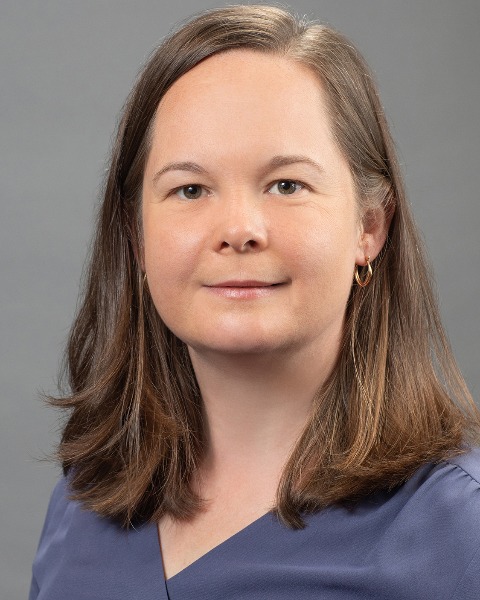Pharmacovigilance
Session: Poster Session C
(046) Extent of apremilast exposure misclassification in CPRD Aurum: a validation study
Sunday, August 27, 2023
8:00 AM - 1:30 PM ADT
Location: Convention Hall
Publication Number: 1042

Rebecca Persson, MPH (she/her/hers)
Epidemiologist
Boston Collaborative Drug Surveillance Program, United States
Presenting Author(s)
Background: United Kingdom general practice databases, including the Clinical Practice Research Datalink (CPRD), are important resources for pharmacoepidemiology and pharmacovigilance as most drugs are prescribed by general practitioners (GPs) even if initiated by a specialist. However, during the conduct of a post marketing safety study (PASS) in CPRD Aurum, we found an unexpectedly high proportion of patients with only 1 prescription for apremilast, an oral treatment for psoriasis and psoriatic arthritis. Investigation revealed that apremilast is classified differently according to local prescribing authorities: either as Hospital/Specialist Only (common in England) or Shared Specialist-GP care (common in Scotland, Wales and Northern Ireland). We conducted a study to better understand the extent of missing exposure data in CPRD Aurum.
Objectives: To validate the capture of apremilast use in CPRD Aurum by comparison to CPRD GOLD and to GP questionnaires.
Methods: We selected all patients in CPRD Aurum or GOLD with a prescription for apremilast recorded between January 2015 (approval) and June 2020 (end of study period). By data source, we described the proportion of patients with only 1 recorded apremilast prescription as well as the median [range] number of apremilast prescriptions, for all patients and, separately, for those in England only. During the period May – November 2022, we then validated the number of apremilast prescriptions issued to patients in Aurum using GP questionnaires. Prescriptions reported by GPs were truncated to align with the PASS study period and exposure definition.
Results: There were 441Aurum patients (424 [96%] in England) and 341 GOLD patients (11 [3%]) in England). In Aurum 91% of patients had only 1 apremilast prescription (median 1; range 1 -10) while in GOLD 29% of patients had only 1 prescription (median 4; range 1 – 55). When restricted to patients in England, 96% of patients in Aurum and 82% of patients in GOLD had only 1 prescription. We received questionnaire responses from GPs for 50 of 390 (13%) patients participating in Aurum in 2022 (all in England) who had 57 total apremilast exposed months recorded in Aurum. GPs reported 8 (16%) patients with only 1 prescription and a median of 4 (range 1 – 35) apremilast prescriptions per patient, yielding 463 total months of apremilast exposure.
Conclusions: CPRD Aurum has incomplete capture of all apremilast prescriptions. GPs may record one apremilast prescription even if continued use is prescribed by a specialist, but questionnaire responses indicated most patients received multiple prescriptions. Researchers should be aware of the strong potential for significant exposure misclassification of apremilast and potentially other treatments depending on local formulary classification.
Objectives: To validate the capture of apremilast use in CPRD Aurum by comparison to CPRD GOLD and to GP questionnaires.
Methods: We selected all patients in CPRD Aurum or GOLD with a prescription for apremilast recorded between January 2015 (approval) and June 2020 (end of study period). By data source, we described the proportion of patients with only 1 recorded apremilast prescription as well as the median [range] number of apremilast prescriptions, for all patients and, separately, for those in England only. During the period May – November 2022, we then validated the number of apremilast prescriptions issued to patients in Aurum using GP questionnaires. Prescriptions reported by GPs were truncated to align with the PASS study period and exposure definition.
Results: There were 441Aurum patients (424 [96%] in England) and 341 GOLD patients (11 [3%]) in England). In Aurum 91% of patients had only 1 apremilast prescription (median 1; range 1 -10) while in GOLD 29% of patients had only 1 prescription (median 4; range 1 – 55). When restricted to patients in England, 96% of patients in Aurum and 82% of patients in GOLD had only 1 prescription. We received questionnaire responses from GPs for 50 of 390 (13%) patients participating in Aurum in 2022 (all in England) who had 57 total apremilast exposed months recorded in Aurum. GPs reported 8 (16%) patients with only 1 prescription and a median of 4 (range 1 – 35) apremilast prescriptions per patient, yielding 463 total months of apremilast exposure.
Conclusions: CPRD Aurum has incomplete capture of all apremilast prescriptions. GPs may record one apremilast prescription even if continued use is prescribed by a specialist, but questionnaire responses indicated most patients received multiple prescriptions. Researchers should be aware of the strong potential for significant exposure misclassification of apremilast and potentially other treatments depending on local formulary classification.

